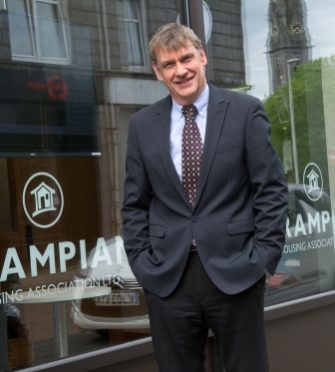As with many things, the first encounter with this circular economy malarkey was a YouTube video.
I have seen so many since, I can’t actually remember what it was. At various points I can recall Mexicans making houses out of bottles, Scots turning plastic into roads, a seven year old entrepreneur recycling his way into the record books, and Swedes opening a cyclical mall, repairing and re-using just about everything in sight. All very arresting images. There was also a book, Cradle to Cradle, which I never got around to reading.
It’s a zeitgeist thing. Since David Attenborough showed us how plastic the world’s oceans are, I can’t do anything without thinking about the planet; not brushing my teeth, or buying spuds. The Association’s tenants have consciences too; a third of them told us they wanted Grampian’s help with recycling when we surveyed them recently. So it was with genuine excitement that I spotted Aberdeen and Grampian Chamber of Commerce making Terri Vogt lead for the Circular North East.
I know that our linear economy is about “take, make and dispose” and it works when it is cheap and raw materials easy to come by. Having seen the consequences and spotted the cash pouring down the drain, it’s not looking too bright. So what does the alternative look like?
Like most folk, I thought that going circular was just about recycling but it is way more complicated. It’s actually about not wasting value, as we do now in disgusting quantity. So the first step is not to produce waste at all, hence the campaign to stop high street chains and supermarkets covering everything in single use plastics. Then there is reuse. If things work and you don’t want to hold on to them, there’s Gumtree, a charity shop, or the architectural salvage yard. If there isn’t a demand, we can re-engineer or remanufacture for a related use. Check out those Swedes:
Why not repair? It can be achieved in many different ways, including changing how you deliver services or goods, for instance by switching to a lease model rather than sale.
The City had some early successes through the charity CFINE, and some private enterprises that are still going strong, with a focus on metals, composting, or food waste. Some enterprises have taken to anaerobic digestion, using bacteria to turn organic waste into methane and in turn, heat and power. Way down the list, and just above landfill, as the last resort for anyone, we have incineration. Oh dear, it just feels like abject defeat, burning stuff. Aberdeen City Council is committed to plunge £150 million into it, but the YouTube world I see suggests a very different way, full of ideas, enterprise and wealth, and one fit for the new century.
The Scottish Government reckons that we lose billions a year by burning waste or consigning it to a hole in the ground or the sea. From a resource perspective, the current economic model doesn’t make sense. It is not sustainable. I met Terri at the Chamber with other business leaders to talk about how to get SMEs and social enterprises interested in going circular. It’s a big ask to reimagine your business model and change the supply chain, or start a new circular business but there’s a planet at stake plus government grant and advice to get you started.
The community groups I have spoken to are up for it too, and if Grampian’s tenants are anything to go by, there’s the interest and the good will across the region to make this work. As Terri said, “This is about growing the North-East economy, diversification of businesses and innovation to identify new business opportunities.” Surely something both Councillors and citizens can unite behind.
